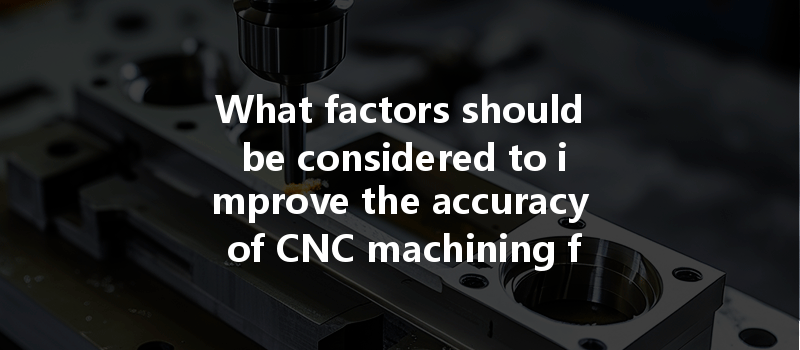Opening:
Did you know that CNC (Computer Numerical Control) machining has revolutionized the manufacturing industry by achieving precision levels of around 0.005 inches? This remarkable accuracy plays a pivotal role in producing complex parts used in various sectors, including aerospace, automotive, and healthcare. With increasing demands for high precision and intricate designs, understanding and optimizing the factors impacting CNC machining accuracy is essential for manufacturers eager to maintain a competitive edge.
Content:
Understanding CNC Machining
Before diving into the factors that improve CNC machining accuracy, it’s essential to understand the basic principles of CNC machining. This automated manufacturing process utilizes pre-programmed software to dictate the movement of machinery and tools, thus enabling the production of complex shapes and designs with high precision.
CNC machining involves a range of processes, including milling, turning, and grinding. While these processes can create complex parts, achieving precise tolerances requires a comprehensive understanding of multiple factors that can influence the outcome.
Importance of Calibration:
Machine calibration is foundational to CNC machining accuracy. An uncalibrated machine can lead to systematic errors, compromising the part’s dimensions and quality.
Solutions:
Impact of Tooling:
The type of tool used during machining significantly affects the accuracy of the final product. Different materials and geometries require specific tooling.
Solutions:
Program Settings Matter:
The CNC programming instructions must be optimized for accuracy. Poorly written programs can introduce errors that accumulate during machining.
Solutions:
Material Influence:
The quality and characteristics of the workpiece material can affect machining precision. Variations in hardness, grain structure, or internal stresses can lead to inaccurate results.
Solutions:

Choosing the Right Strategy:
The cutting strategy determines how the tool interacts with the material. Strategies that optimize chip removal and tool engagement directly impact accuracy.
Solutions:
Environmental Factors:
Temperature fluctuations and humidity can cause material expansion or contraction, affecting dimensional accuracy.
Solutions:
Importance of Fixturing:
Proper fixturing secures the workpiece in place and resists movement during machining. Poor fixturing can lead to misalignment and therefore inaccuracies.
Solutions:
In conclusion, improving the accuracy of CNC machining for complex parts involves multiple interconnected factors, including machine calibration, tool selection, programming optimization, material characteristics, cutting strategies, environmental controls, and fixture design. Each element plays a critical role in ensuring machining precision and product quality.
As the demand for intricate, high-precision components continues to grow across various industries, manufacturers must pay close attention to these factors. By implementing best practices and adopting innovative solutions, companies can enhance their CNC machining processes and deliver superior products that meet and exceed customer expectations.
This blog underscores the significance of understanding and optimizing factors affecting CNC machining accuracy. For manufacturers striving for excellence, investing in technologies and practices that assure precision becomes not just an option but a necessity to thrive in an increasingly competitive market.
Why This Blog Matters:
Emphasizing the importance of high-accuracy CNC machining is crucial, as it not only impacts production efficiency and quality but also aligns manufacturing operations with industry standards. In our quest for innovation and superior craftsmanship, considerations outlined in this blog should be carefully scrutinized and applied, paving the way for a more precise and reliable manufacturing future.
—
Related Posts
- What is the importance of selecting the right material for CNC machining of medical devices and how does it impact product quality?
- How can CNC machining effectively handle the difficulties of slender shaft part production?
- What is the difference in tool selection for CNC machining polycarbonate PC vs. transparent acrylic PMMA?






